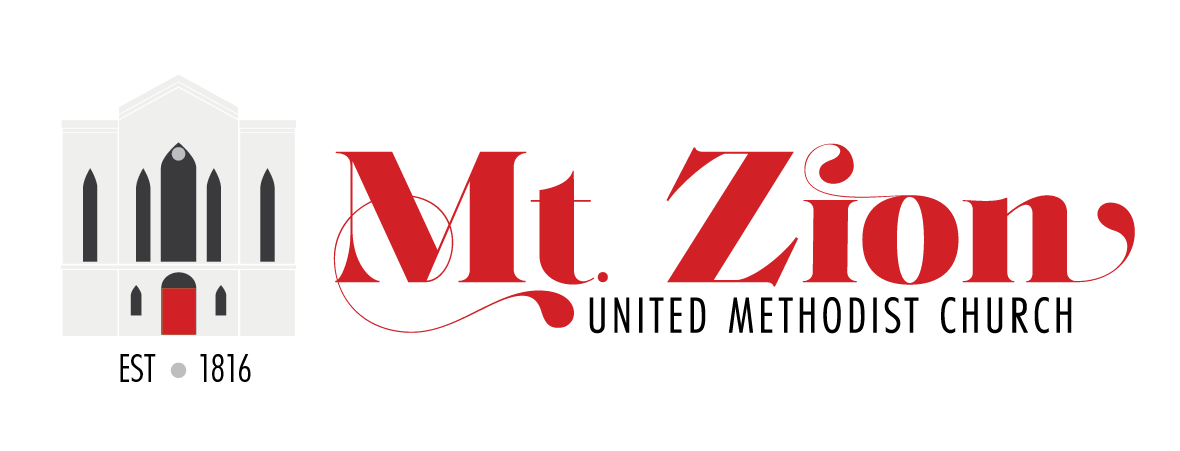
Source: Real estate directory of the city of Washington, D.C. suburbs of Washington city, serial number 50, 1874 - Plate 1. City and Georgetown Mount Zion Historic Campuses
(1816 through present)
The current Mt. Zion Historic Campus includes three historic building and is now located at 1334 29th NW, Washington, DC 20007. All three buildings including the Mt. Zion United Methodist Church, the Parsonage House (a private residence), and the Community House are owned and operated by Mt. Zion United Methodist Church.
Click on this video to hear Mt. Zion members narrate our amazing and rich history!
In 1816, free and enslaved black Methodists established a new church and made history in the District of Columbia.
This is the story of their legacy that still endures over 200 years later…
Mt. Zion United Methodist Church is the oldest African American congregation in the District of Columbia. It was founded on October 16, 1816, when 125 black parishioners, both free and enslaved, left the Montgomery Street Church (now Dumbarton United Methodist Church) founded in 1772 due to prejudice and discrimination.
The black Methodists purchased land on Mill Street (now 27th Street) in Georgetown and built a brick church known as both the Meeting House and Little Ark. The name of the church was changed to Mt. Zion Methodist Episcopal Church in 1844. During the years preceding the Civil War, black churches not only served as houses of worship, but also sites for political meetings, schools, and in the case of Mt. Zion—a station on the Underground Railroad.
The American Colonization Society (ACS) was organized in Washington, D. C. during December 1816 shortly after the founding of Mt. Zion. The Society endeavored to expatriate non-enslaved people of African ancestry from the United States to Liberia. Most free black people opposed the ACS, and Georgetown’s free residents of color issued a statement condemning the Society’s goals in January 1817. The Methodist Episcopal Church was a supporter of the ACS and recruited Mt. Zion members for resettlement, but most refused to leave.
Educational opportunities for black residents were extremely limited in Georgetown and greater Washington, but teaching free and enslaved people of African descent to read and write was not prohibited as in most southern jurisdictions. On September 6, 1823, a Sabbath School was established at Mt. Zion, and it promoted the literacy of adults, as well as children. Mt. Zion was the site of several other schools during the antebellum and Reconstruction eras.
The Mt. Zion congregation openly supported and engaged in efforts to abolish slavery and also provided clandestine assistance to black people fleeing from bondage. Members joined and supported national anti-slavery organizations and assisted those travelling via the Underground Railroad. Fugitives were hidden in the windowless burial vault on the grounds of the Old Methodist Burying Ground/Mt. Zion Cemetery and sometimes spent weeks hiding among the dead until safe passage to their next stop could be secured.
During the Civil War, Mt. Zion members served in regiments of the Union Army’s Colored Troops. Church members, including some of the formerly enslaved, became active in Washington politics and held positions in local government during Reconstruction. By the 1870s, the congregation had outgrown the church building, and in 1884 a new Mt. Zion Methodist Episcopal Church was dedicated on its present site on 29th Street in Georgetown. The church also acquired the Old Methodist Burying Ground and renamed it Mt. Zion Cemetery in 1879.
By the early 20th century, Mt. Zion was one of the largest African American congregations in Washington. In 1920, the church purchased an English style cottage to serve as a Community House for neighborhood children. Now known as the Mt. Zion Heritage Centre, the cottage has been deemed historically and architecturally significant—the only remaining structure of its kind in the city of Washington. During the 1930s and 40s, the demographics of Georgetown began to change. Urban renewal and gentrification consisting of a variety of covenants and laws, including the Old Georgetown Act of 1950, forced many Mt. Zion members to leave their ancestral neighborhood. Mt. Zion’s Reverend James D. Foy testified before Congress on
June 22, 1950 about the detrimental economic and cultural impact of this law on these African American citizens. His testimony fell on deaf ears, the Old Georgetown Act became law, gentrification continued, and the black presence in Georgetown exists primarily on Sundays within the walls of church sanctuaries.
From the 1950s to the 1970s, several sets of legal proceedings were undertaken to sell two African American cemeteries, referred to as Mt. Zion Cemetery located on Q Street, a few blocks from the church. Real estate developers had been trying to acquire the properties for years. Black people had been buried in the Mt. Zion and Female Union Band Society Cemeteries beginning in 1808 and 1842, respectively. After decades of court hearings, it was ruled in 1977 that the cemeteries would not be sold.
For more than 200 years, Mt. Zion United Methodist Church has been a religious and cultural institution in Washington, D. C. Mt. Zion Church and Mt. Zion Cemetery are included on the National Register of Historic Places. The Mt. Zion and Female Union Band Society Cemeteries have been designated global recognition as a Site of Memory associated with the UNESCO Slave Route Project. The Mt. Zion parsonage is the birthplace of Bishop Leontine Turpeau Current Kelly, the first African American woman elected to the episcopacy of the United Methodist Church.
Mt. Zion continues to serve—offering meals to sheltered challenged residents, sponsoring educational programs for local school children to learn about black history, leading historic preservation efforts, and advocating for human rights in the United States and abroad. Mt. Zion is continuing centuries old traditions of Christian service, and members take seriously their responsibility to maintain the legacy of the 125 free and enslaved black Methodists who founded this historic church.
© Mount Zion UMC (Georgetown)
